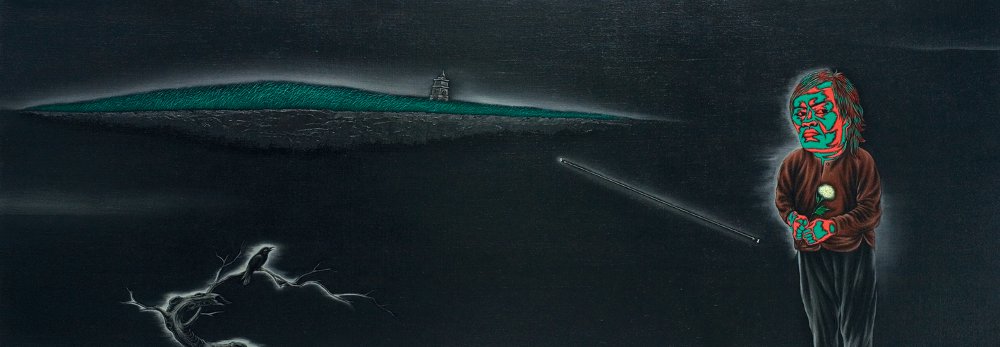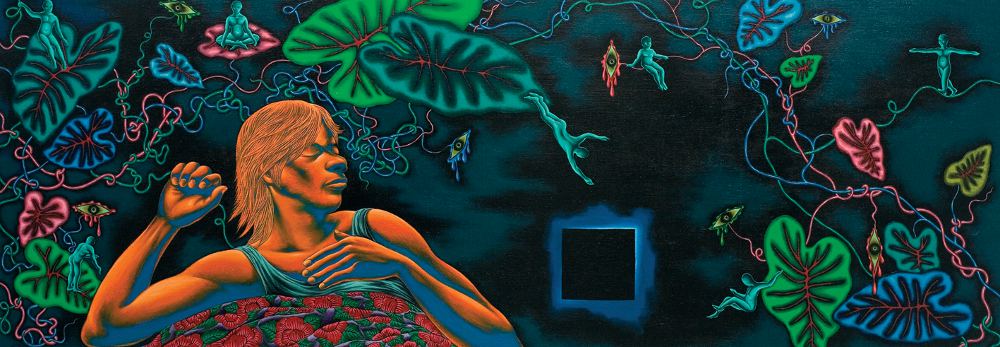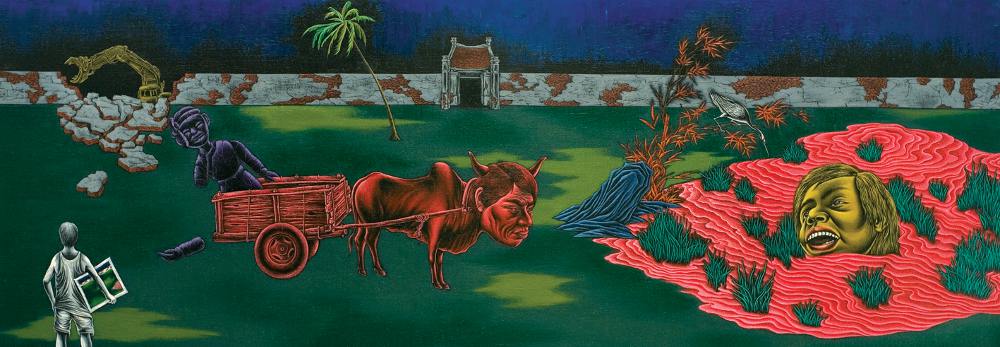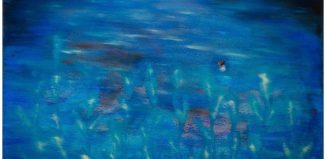KVT – The Homeland of Tuan Anh
The artist represents himself, and, perhaps, everyman, as a burning mask enclosed in a brick, kiln like structure. Divorced from the discussions and conjectures by the urgent necessity to make enough money
The artist decides to formalize his next canvas like a pagoda lacquer picture as he takes a journey from childhood to the man he is today. The journey, represented by the fractured bamboo ladder with its unaligned rungs, has not been without dislocation. But I realize that the artist has a more philosophical reason for the visual arrangement; perhaps Lao Tse’s concept of ma?
The rambling rose is a potent symbol of life and its place of origin still gives succor to the adult. However the plant has now been removed from the ground and the last rose is changing its hue. Does this intimate a future divorced from memory and tradition?
The canvas is a matrix that refers to a point of origin and to rectangular arrays of mathematical elements. Across the top of the grid are numbers counting to infinity. Across the bottom are correlating mathematical symbols that relate and refer to the Riddle of the Sphinx and thus, again, the ages of man.
As a child the artist was scared of the tombs that were scattered through the paddy fields. They meant death, ghosts and wandering souls. As he grew older the thought of death became less full of dread. The symbols and rituals surrounding death became prosaic but he is sometimes bound by others’ beliefs of what comes after death
As the artist ponders this confusion, holding a white rose that could be seen as either a symbol of life or an offering to the dead beliefs of childhood, his flesh glows green and orange, hot and cold as he wanders beside his childhood river that has become a metaphor for the river that carries the dead to the afterlife. Perhaps he’s torn between the reasoning that the body comes from zero and returns to zero, and the traditional beliefs of the dead as conduits to health, wealth and happiness.
The canvas is balanced between the two dichotomies. Fear and superstition represented by the black crow that comes at midnight to pronounce a death, and the cold path of reason.
Note the dominance of the triangles and, too, the circle that is formed by a mythical creature perhaps grasping for its own tail and completion.
It’s a summer night and the artist as adolescent is sleeping. Umbilical tendrils connect him to dreams and memories of happy childhood and eyes watch him from tangled vines. They could be the watchful, caring eyes of his extended family, or they may be his conscious self looking into a future away from the known. Small, naked boys, representing the artists growing to adolescence play, learn and experiment all balancing precariously on vine. Two launch themselves into an unsure future that is the ominous yet inviting black square.
It’s like those dreams we all have when we fall to unfathomable depths and wake before we hit the bottom…in sweat, fright or wonder.
We are inside the artist’s village which is being destroyed from both within and without. The machinery of the present knocks down traditional walls and barriers and invites the new to infiltrate and take over.





















